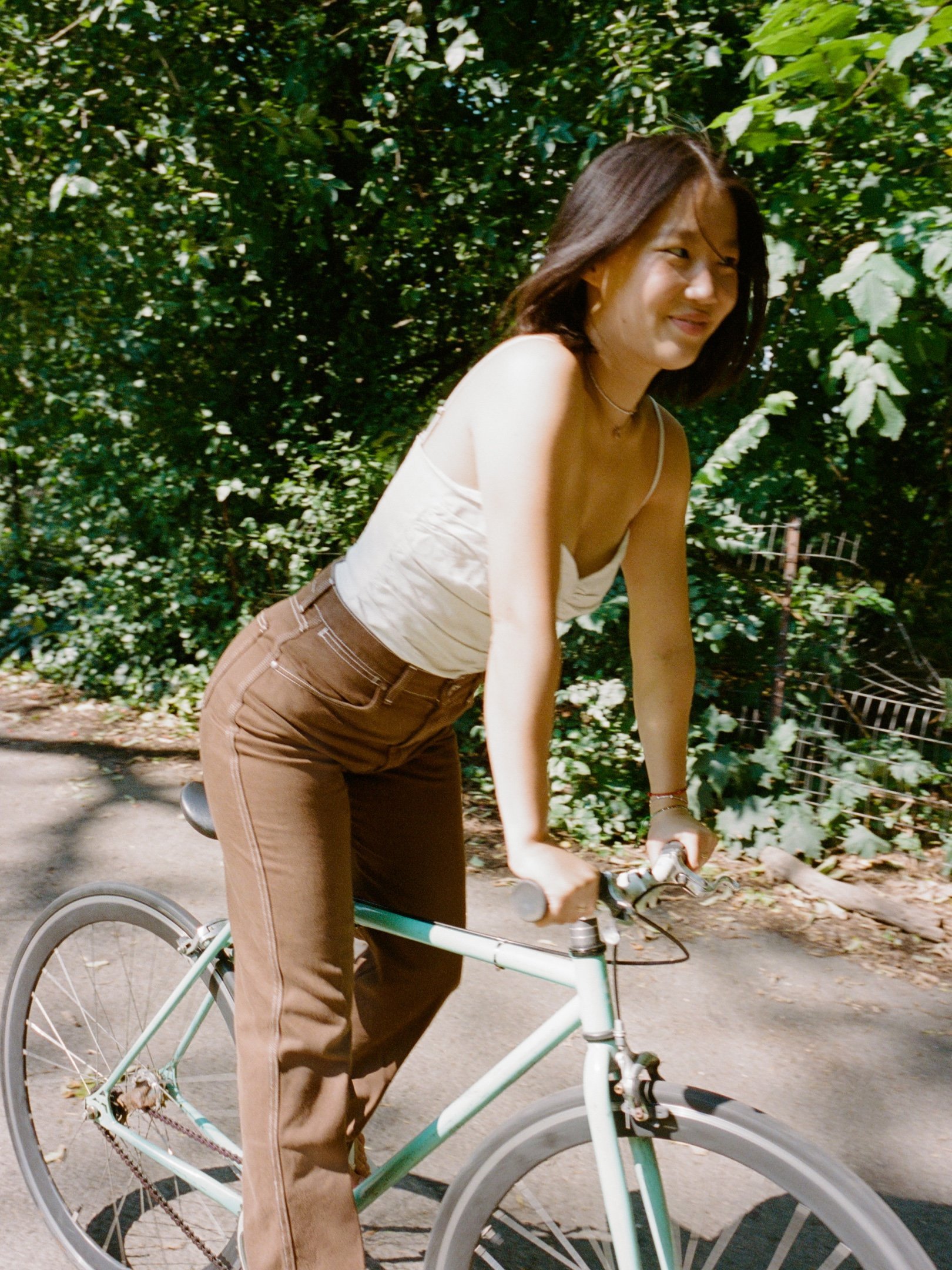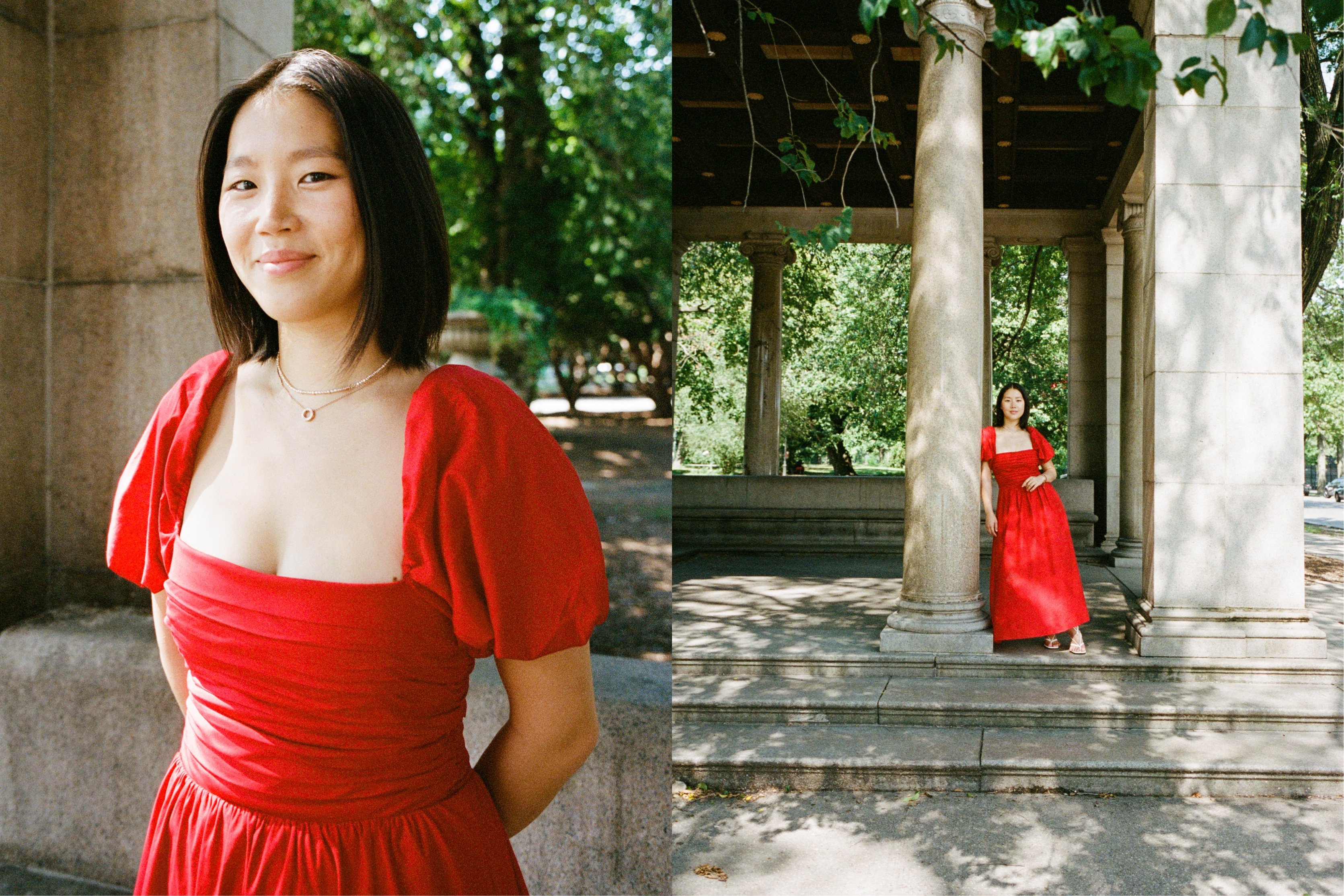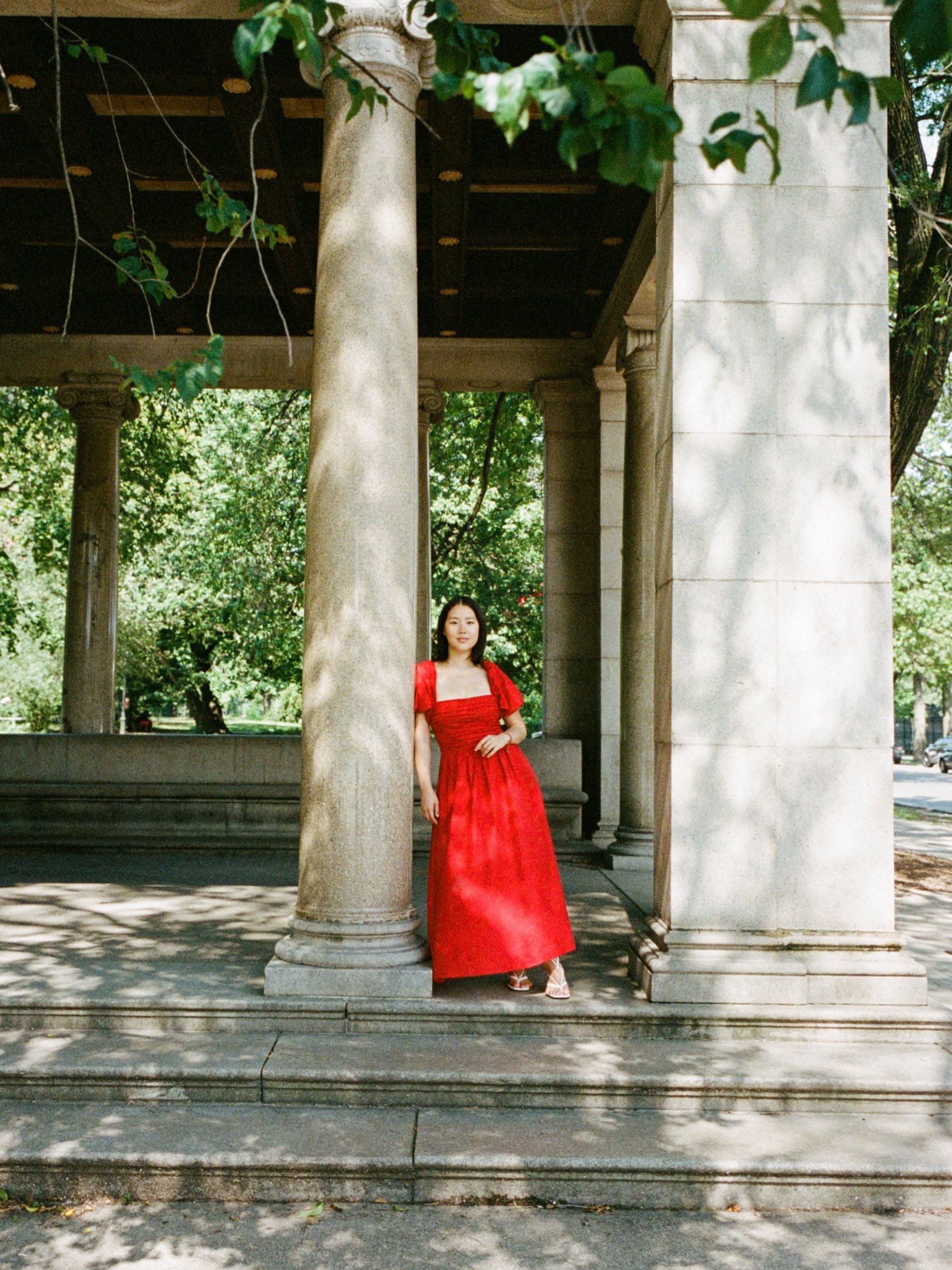Sophia Li
Getting stuff done with
Getting stuff done with Sophia Li

Meet Sophia Li, multimedia journalist and director rejecting climate apathy on All of the Above.
Ref: Tell us about your journey.
Sophia: I’m an old soul with a youthful spirit–this dichotomy is the foundation for how I see the world. I grew up between four states (Minnesota, Tennessee, Texas and Virginia) and two countries (the US and China). I’ve been a storyteller since I was able to talk, having to relearn my ABCs at four years old after moving back to the States from China. I was also able to gain the skills of a good listener. To tell the most moving stories, one must first be a good and present listener.
R: What inspires you?
S: The odds of me or any of us being alive are basically zero or, more accurately: the probability of us existing comes out to 1 in 102,685,000.
R: How did you first get interested in sustainability?
S: Everyone has a climate story, as I like to say. My parents grew up in rural parts of China and my grandparents are Buddhists. They always had a very symbiotic relationship with nature—my parents always understood farming and regenerative agriculture. Sustainability was a lifestyle out of necessity and also an understanding about the deeper natural world we’re connected to. It was ingrained in me early on. Also, because of my upbringing in China, I could see firsthand the impacts of major cities like Beijing and Shanghai and what pollution was doing to them. Within just a decade, a blue sky day in a city in China became a rarity from overpollution. My Chinese relatives were in awe of how blue some of the skies were when visiting the US.
R: What cause or causes are important to you?
S: Climate justice which equates to racial justice which equates to social justice.
R: What’s something you’re excited about?
S: I’m a futurist and have always been forward-thinking. For the longest time, I wanted to be a trend forecaster while in school, predicting the trends of the future. For now, I am excited about this radical period of transition we’re going through, hopefully ushering in a future that is rewired with humanity at its core.
R: What motivated you to create All of the Above?
S: My partner, Céline Semaan of The Slow Factory, and I created AOTA to bring a different perspective into the climate conversation because 1. climate news was only reported on .4% in all of 2020 according to Media Matters and 2. we wanted to bring this to the forefront and connect all the dots of the overwhelming information.
R: How do you stay optimistic about the climate?
S: It’s the only choice in my opinion. To be pessimistic about the climate would mean I don’t believe in the future of this planet. To be apathetic about the climate would mean I am in denial of the crisis we’re in. Being a climate optimist is the only way forward; you have to believe in your work in order to fully achieve the goals we’re asking.
R: Why is it important to talk about the environmental impact of fashion in particular?
S: Because the fashion industry is one of the most polluting industries. For carbon emissions, the fashion industry is responsible for about 8% of the total worldwide greenhouse gases–that’s more than all international flights and shipping combined, according to the UN.
R: How can people resist the binarized idea of being sustainable?
S: Understanding sustainability as a spectrum is a foundational step into understanding the climate. Consider this: no one can be essentially zero-waste, as even if you recycle, less than 10% of recycled items actually get recycled into usable materials. I’m sharing this because the idea of being a ‘perfect environmentalist’ can be paralyzing. Being intentional is different than being perfect. And this is one of the many examples of how sustainability is a spectrum, not a binary.
R: In what ways have you seen the sustainability conversation change throughout your career?
S: When sustainability first came into the vernacular, the conversation revolved around the individual and what the individual could do, i.e. being zero-waste. Then it evolved into pointing the finger at companies and fossil fuels. Now with AOTA and our increased knowledge of this space, the conversation needs to revolve around all-of-the-above solutions with both individual and collective action working simultaneously.
R: Intersectionality affects the way people experience climate change. Do you think it also affects the way people respond to it?
S: 100%. Communities of color have been talking about the impacts of the climate crisis for a decade now because they were the first to experience it. Also, those on the climate frontlines don’t have room or time to believe the climate crisis is a far off catastrophe–they are experiencing it now.
R: How do we influence existing institutions to become more intersectional?
S: Revolution starts internally. The influx of nontypical politicians from AOC to India Walton, who just won the Buffalo primary, shifts the institution to become more intersectional. The more we influence from within, the greater the shift is towards intersectionality.
R: Besides climate, what other binaries should we get rid of?
S: All binaries! Gender binaries, race binaries, political and financial binaries.
R: Does your journalistic experience inform how you define sustainability?
S: For sure–as a journalist, you begin to understand how words and language itself can be harmful because 1. we can all interpret a notion such as sustainability differently when it’s not regulated, and 2. just as we individually see a picture when looking at the same painting, we all hear and communicate words differently as well. Thus, I never try to take any buzzword or phrase at surface level.
R: What advice would you give to people who want to get involved in the climate conversation?
S: Simply start participating! It doesn’t have to be at a grand scale–it’s even more powerful and impactful having these conversations with your immediate circle. One of the biggest myths is that there are a lot of climate change deniers–the more we talk about the climate, the more we understand everyone is also on the same page, and the faster we can all unify to move forward.
R: Do you wear sweatpants behind the news desk?
S: No, but I am usually braless and barefoot.
R: What’s the coolest thing you’ve learned on All of the Above?
S: That it only takes 3.5% of us to engage in civil disobedience (nonviolent protests) to incite change, as researched by Harvard political scientist Erica Chenoweth.
R: Best place to eat in New York?
S: Can’t choose but best pizza in Brooklyn? Paulie Gee’s.
R: What are you reading right now?
S: The Celestine Prophecy, Pachinko.
R: Most embarrassing fashion trend you participated in?
S: Basketball shorts and those little cardigans that just wrap around the armpit combo worn in middle school.
Meet some of the other people who are getting stuff done.

